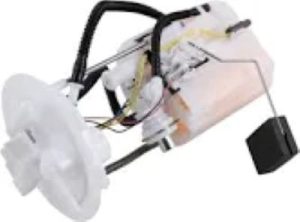Fuel pump strainer, a.k.a. pre-filter, serves as an essential security role to protect the fuel pump in smooth operation of your car's fuel system. First and foremost, its job is to clean the gas as it gets pulled into the fuel pump. This helps prevent these particles from entering the fuel pump and potentially creating damage to the pump’s internal components.
Fuel contamination is one of the most common problem, but one that can affect older vehicles or those not sold in regions with well-regarded fuel standards. The strainer is your fuel system's first line of defense, and if it fails or becomes clogged with debris from fuel degradation it may have no other choice but to allow the larger particles to pass on to the fuel pump and/or injectors. According to a 2020 report by The National Institute for Automotive Service Excellence (ASE), approximately 8% of fuel system problems can be traced back to contamination and that is why the fuel pump strainer plays a key role in the protection of your vehicle.
It is usually made out of a fine mesh which can filter smaller particles, about 70–100 microns. By filtering the fuel to this degree enough dirt and debris is removed as to allow an optimal efficiency of work for the fuel pump, has a longer life. Generally, a fuel pump should last between 100,000 and 150,000 miles, and a good strainer helps ensure it makes it to that mileage since it takes care of contaminants that might otherwise wear out the interior components.

A clogged fuel pump strainer will also force the pump to work harder pulling through fuel, introducing even more heat and wear into a system that is already operating at too high of a temperature. The result can be symptoms such as the engine misfiring, poor fuel mileage or even hard starting. Installation of the strainer when performing a fuel pump service is an inexpensive preventative measure. Fuel Pump StrainersA new fuel pump strainer usually costs between $10 and $30, depending on the car and model.
The other group is, as Henry Ford famously said: "Quality means doing it right when no one is looking". The principle of the invisible man is realized through the fuel pump strainer, which keeps a low profile but maintains the performance of the fuel pump while maintaining cleanliness in the conductive ability of the fuel system, although often hidden when autopilot.
In conclusion the fuel pump strainer is to protect and prolong the life of your pump by capturing contaminants in the fuel. Replace your strainer often to avoid extra fuel system charges that could have previously been averted with some simple maintenance. To know more about how you can help to keep or change your fuel pump visit Fuel Pump.